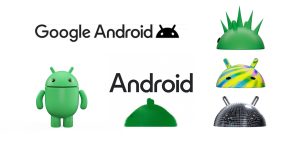
Earthquake early warning systems (EEW) can quickly detect tremors and provide a warning before shaking arrives. ShakeAlert is the system funded by the United States Geological Survey and other partners for the West Coast. Google now looks to be building earthquake alerts from that system into Android as part of Play Services.
About APK Insight: In this “APK Insight” post, we’ve decompiled the latest version of an application that Google uploaded to the Play Store. When we decompile these files (called APKs, in the case of Android apps), we’re able to see various lines of code within that hint at possible future features. Keep in mind that Google may or may not ever ship these features, and our interpretation of what they are may be imperfect. We’ll try to enable those that are closer to being finished, however, to show you how they’ll look in the case that they do ship. With that in mind, read on.
The seconds to tens of seconds of advance warning can allow people and systems to take actions to protect life and property from destructive shaking. — USGS

Google’s work on integrating earthquake information dates back to at least January, with version 20.26.12 of Play Services this week better detailing the notifications. First off, these alerts are powered and detected by the ShakeAlert system of sensors.
Android uses your approximate location to send information about nearby earthquakes. Earthquakes are detected by ShakeAlert.
At the moment, Los Angeles offers a ShakeAlertLA application that delivers alerts, while UC Berkeley has MyShake for the rest of California.
<string name=”ealert_settings_detected_title”>When an earthquake is detected nearby</string>
<string name=”ealert_settings_detected_text”>”You’ll get an alert with the estimated magnitude and distance from your location”</string>
In Google integrating this functionality directly into Android via Play Services, users don’t have to download a separate app that they might not even be aware of. With California having a population (2019) of 39.5 million people, the statewide app only has 500,000 installs on the Play Store. The over 100,000 installs for the Los Angeles client pales in comparison to the 10 million people in the county.
Depending on how close you are to the earthquake, there are two types of alerts. The first is more immediate and tells users to “Expect shaking” along with details:
<string name=”ealert_notification_nearby”>Earthquake nearby</string>
<string formatted=”false” name=”ealert_nearby_notification_text”>Expect shaking. Estimated magnitude %.1f about %s away.</string>
The other just mentions the estimated magnitude and how far you are from it:
<string name=”ealert_notification_occurred”>Earthquake occurred nearby</string>
<string formatted=”false” name=”ealert_occurred_notification_text”>Estimated magnitude %.1f about %s away. Tap to learn more.</string>
It’s not clear if these alerts will be enabled by default, or if users have to opt into them. A “Keep in mind” message during an intro process warns how:
- Not all earthquakes can be detected
- Magnitude and shaking intensity estimates may have errors
- You may receive an alert before, during, or after shaking begins
As part of this experience, Google will provide a number of general tips, and possibly a map when clicking on the notification:
- Identify hazards and secure movable items
- Create a disaster plan and decide how you will communicate in an emergency
- You may receive an alert if an aftershock is expected
Work on this functionality picked up with the latest Play Services release. However, it’s not clear when or if Android earthquake alerts will launch.
Dylan Roussel contributed to this article.
FTC: We use income earning auto affiliate links. More.

Comments